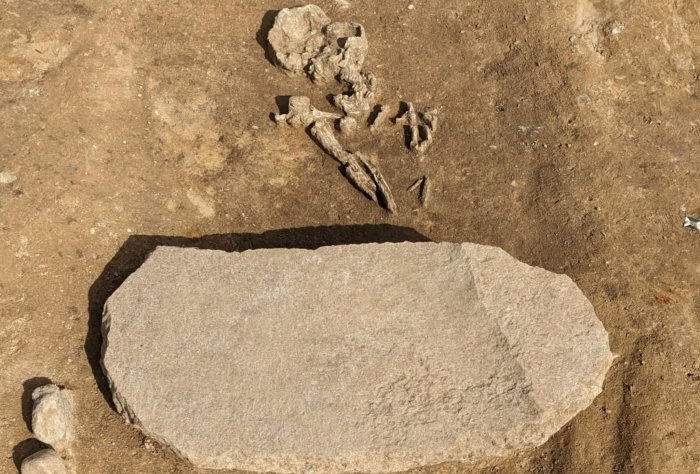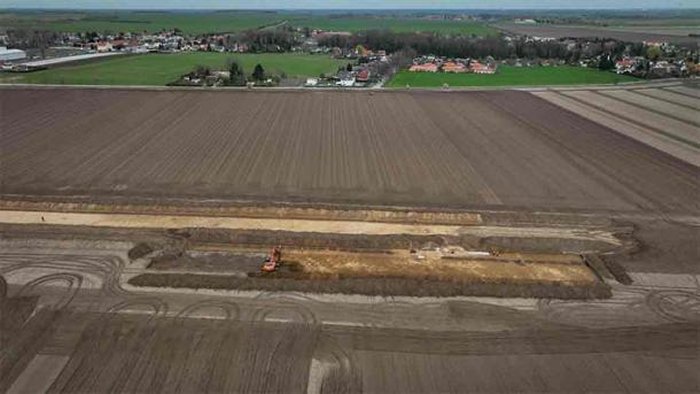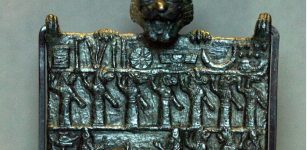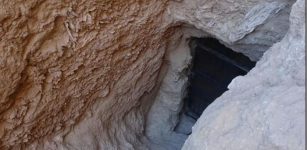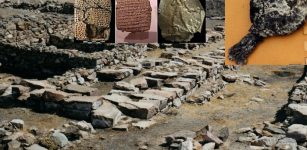Neolithic ‘Zombie’ Grave Found Near Oppin In Saxony-Anhalt, Germany
Jan Bartek - AncientPages.com - Archaeologists in Oppin, Saxony-Anhalt, Germany, have uncovered a remarkable 4,200-year-old grave that sheds light on ancient burial practices. The grave, dating back to the Neolithic period, is called a "zombie" grave. The individual was buried with a large stone placed on top of the body to prevent any attempt, suggesting an attempt to prevent the deceased from "coming back to life" and causing disturbances.
In the revenant's grave, a wide stone was found above the lower legs of the buried person. Credit: State Office for Monument Preservation and Archeology Saxony-Anhalt, Anja Lochner-Rechta
This discovery provides valuable insights into the beliefs and rituals surrounding death and the afterlife during that era, offering a glimpse into our ancestors' cultural and spiritual practices.
According to excavation manager Uwe Moos, the buried individual is an adult male, estimated to be between 40 and 60 years of age. His body is positioned on the left side, with legs bent and facing eastward. Notably, a substantial stone measuring approximately one meter in length, 50 centimeters in width, and 10 centimeters in height is situated across his lower legs. This detailed description provides crucial information about the positioning and physical characteristics of the remains, contributing to a comprehensive understanding of the burial context.
It is the first time an ancient grave of this king has been found in Central Germany, and scientists suggest the buried individual may have been a member of the Bell Beaker culture.
The Bell Beaker culture refers to a group of people who lived in the temperate regions of Europe during the Late Neolithic and Early Bronze Age, approximately 4,500 years ago. They derived their name from the distinctive bell-shaped pottery vessels they produced, which were decorated with horizontal zones created by finely toothed stamps. This cultural group played a significant role in Europe's transition from the Neolithic to the Bronze Age.
"We know that people feared unpleasant revenants even in the Stone Age. People wanted to prevent that with magic," said project manager and archaeologist Susanne Friederich.
"There are graves where the corpse even lies on its stomach. Back then, people believed that dead people sometimes tried to free themselves from their graves. If it lies on its stomach, it burrows deeper and deeper instead of rising to the surface.
There are also dead bodies lying on their stomachs who were also pierced with a lance, so they were practically fixed in the ground," explained Friederich in a press release.
The route corridor from the southeast link near Oppin with the unusual burial site from the late Neolithic (approx. 2800–2200 BC). Credit: MDR Narchrichten
Last November, Friederich and her team made an intriguing discovery in the Oppin region – another potential revenant burial, this time dating back to the 2nd or 3rd century. Interestingly, three large stones were placed on the individual's legs, a practice associated with revenant burials, which were burials intended to prevent the deceased from rising from the grave.
See also: More Archaeology News
The grave contained a bronze fibula, indicating that the deceased was not impoverished. In close proximity, the skeletal remains of a woman were found without any revenant-related measures applied. Interestingly, the outline of a house was also discovered near both burials, suggesting that these two individuals may have resided in that dwelling during their lifetimes.
The Neolithic skeletal remains have been carefully removed from the grave and are being transported to a laboratory in Halle for further examination and analysis.
Written by Jan Bartek - AncientPages.com Staff Writer

